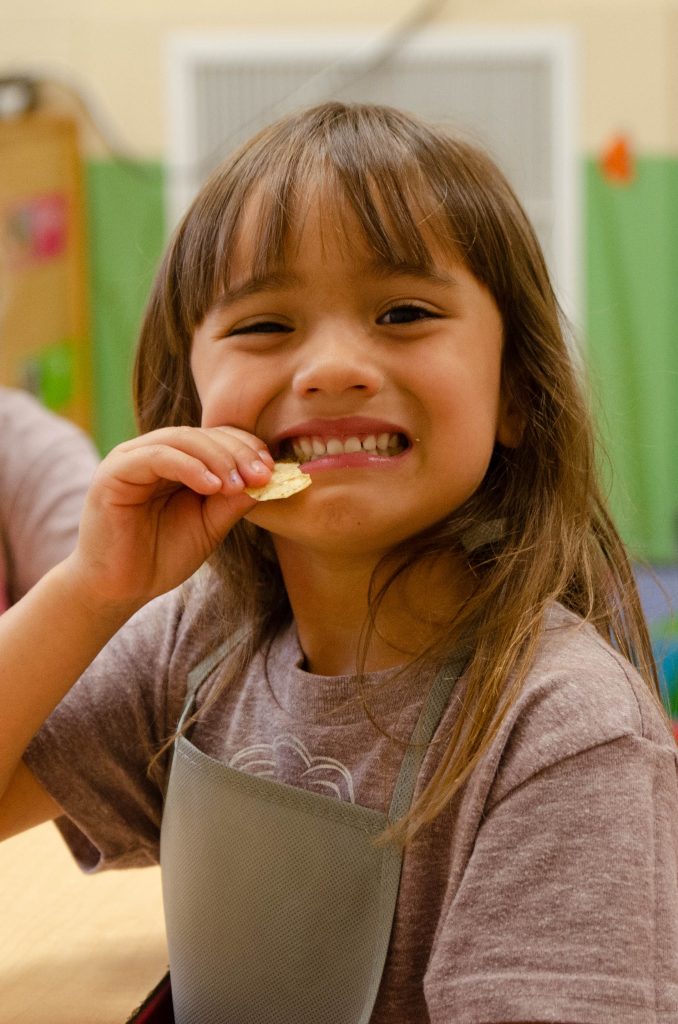No, I don’t mean salsa dancing. . . Our 4s, 5s and Kindergarten Spanish classes are making some SALSA! The salsa garden vegetables are finally ripe and ready to be harvested! These classes have been a part of the process since the beginning. They saw the garden when it was first planted and learned about what each plant needed to grow as well as the names of each of the plants in Spanish. They practiced saying them each time they visited the garden. They played some games, like “hot potato” with plastic ingredients to practice the names of the Salsa ingredients in Spanish as well as a memory card game. Next, they watched the plants grow bigger and bear fruit. They learned what it means for a crop to be ripe before harvesting it and that some need extra time to grow. Finally, they were able to get hands on to pick and prepare the vegetables for their own salsa. What an exciting and enriching experience! This was also a great opportunity to learn about the foods that grow in Spanish speaking countries. The students learned about the months of the year, seasons and all things that make foods in Spanish countries thrive!
The first step to making salsa is harvesting the vegetables. The students were able to hand pick the tomatoes, peppers, onions, and cilantro from the garden. Because we live in Florida, our climate is very similar to other Spanish speaking countries, so these vegetables did very well in our garden.
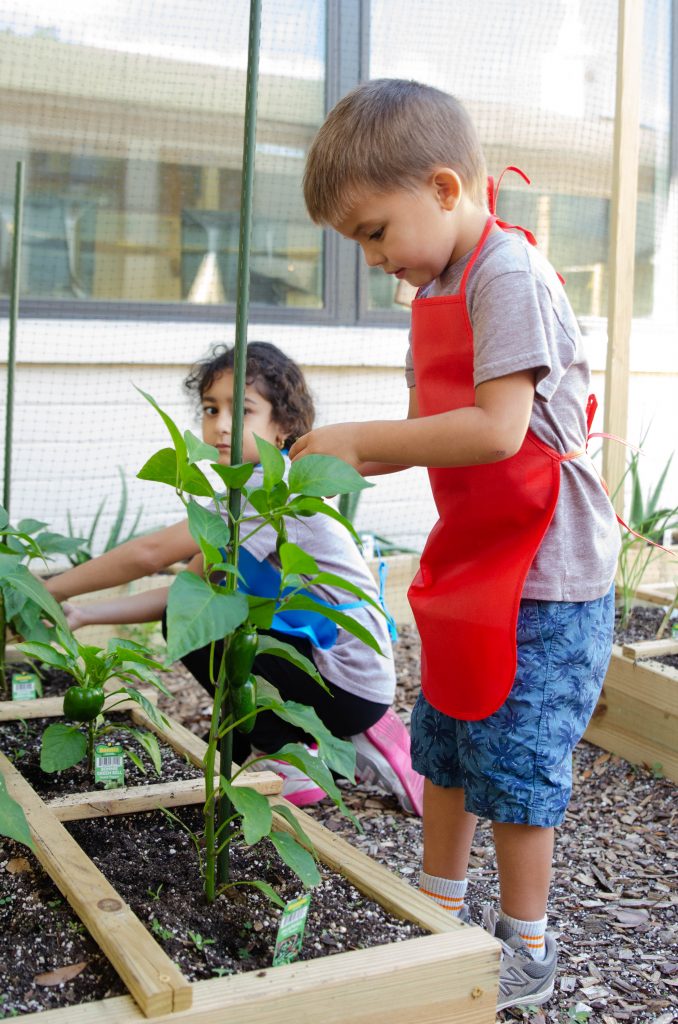
Next, it was time to wash their plants off. They were able to get their veggies all nice and clean and free of any dirt or bugs!
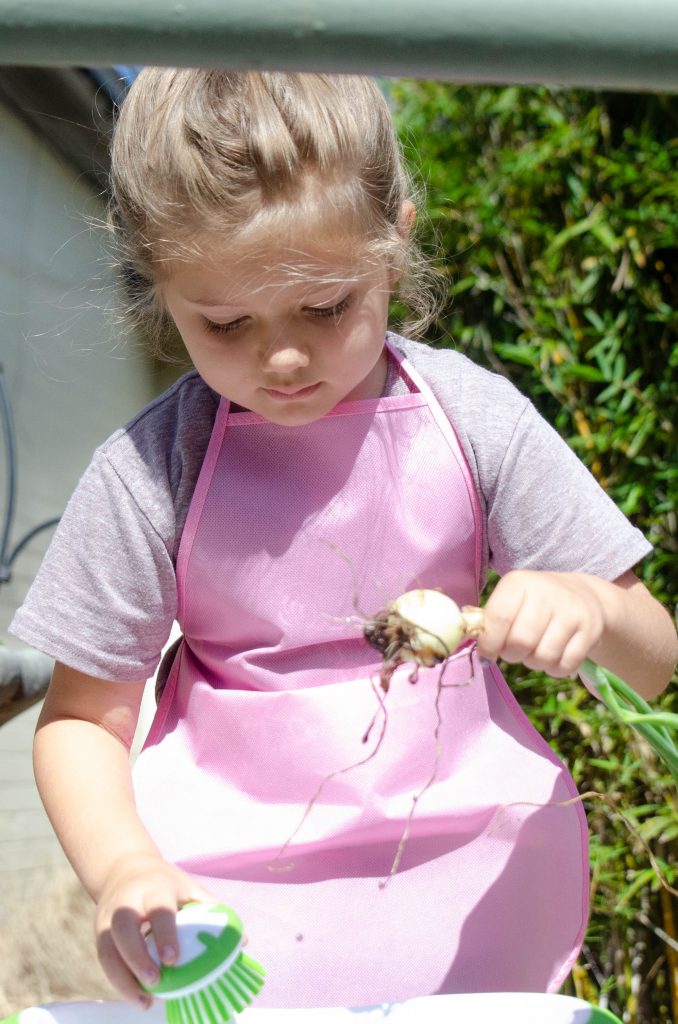
Then, some of the students helped with preparing the veggies for the salsa by chopping them up with child safe kitchen tools. This is a great way to practice those fine motor skills as well as their concentration.
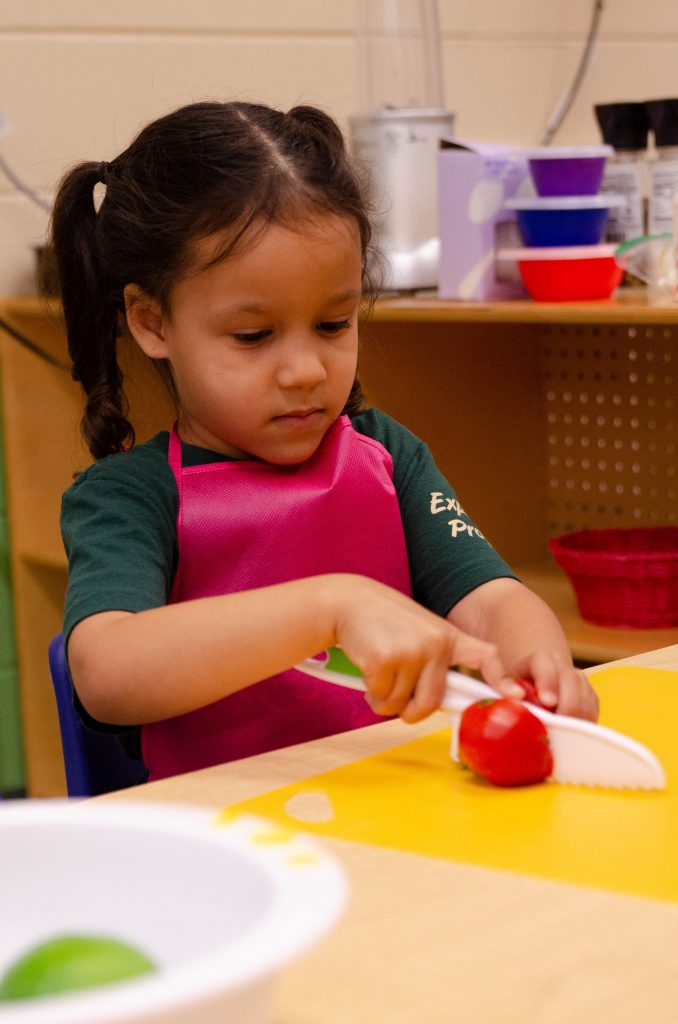
Lastly, they added all the ingredients together and Señora Rojas blended them up to make some fresh salsa! They learned about recipes and how measuring out your ingredients is important because too much or too little of something can drastically change the taste and flavor of your dish. Señora Rojas brought a couple extra ingredients to enrich the flavor of their salsa that they couldn’t harvest from the garden. Our Kindergarten classes made recipe cards and practiced writing their vocabulary words that related to the Salsa Garden in Spanish.
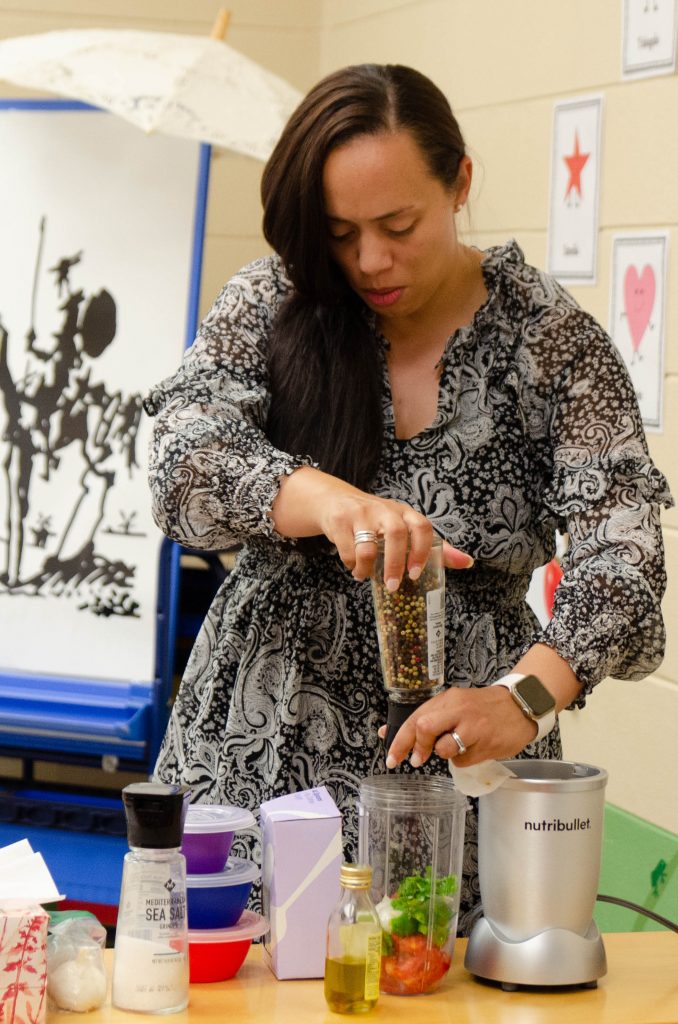
What a unique learning moment for our students that they were able to watch the entire process of how food is made, particularly in Spanish speaking countries, and get that hands-on experience. They really enjoy the salsa garden and have loved seeing the progression of the plants over the last few months, even when they aren’t in Spanish class. Maybe this will spark some interest in gardening at their own homes and making homemade recipes from their own plants!
Of course, their chips and salsa snack was quite the hit! Muy deliciosa!
